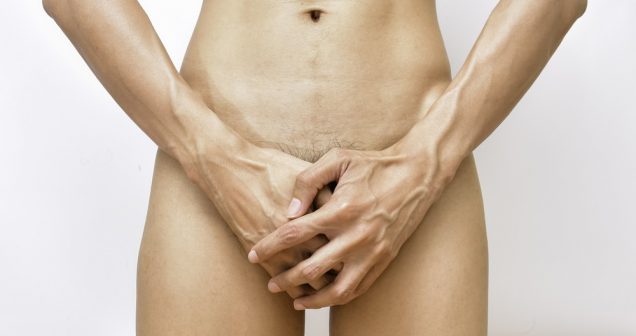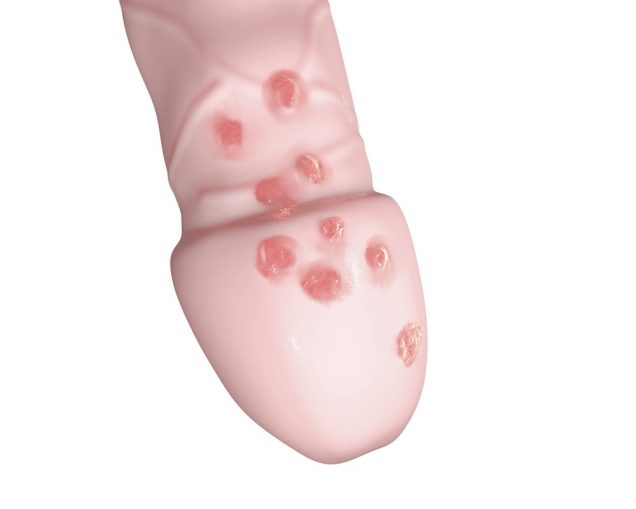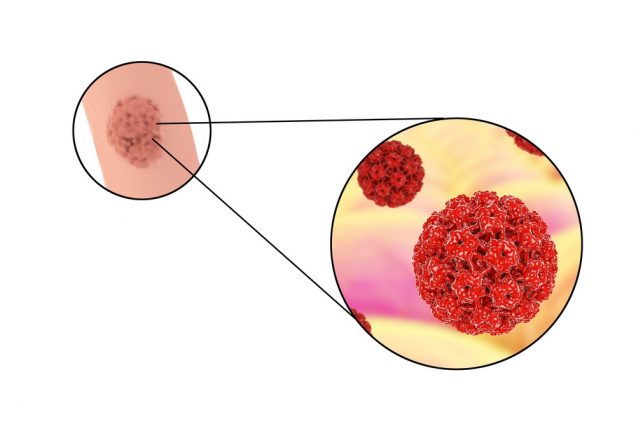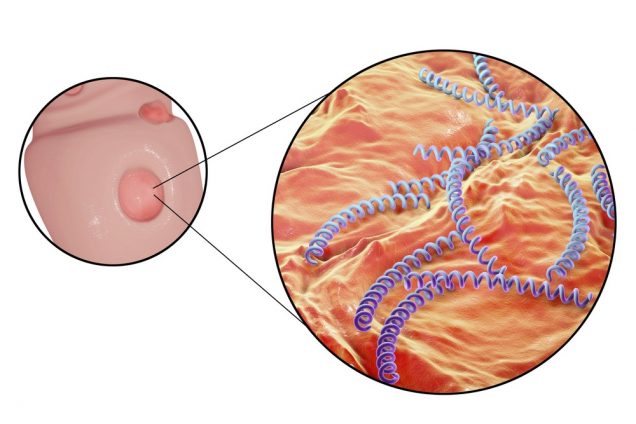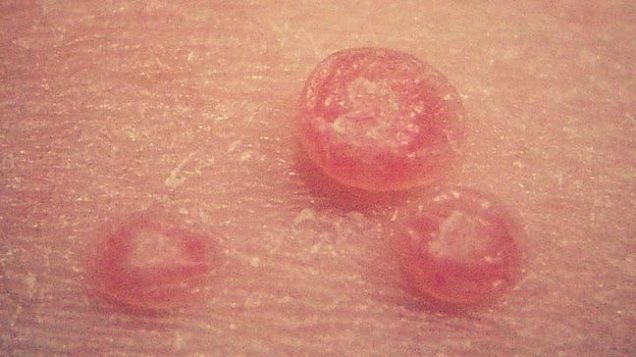Bumps on Penis
In this article we are going to focus on different types of bumps that can be found on penis. Normally penile spots do not indicate anything very serious. But it’s definitely a good idea to consult a health care professional. The spots can be shown to your General Practitioner, or better to a professional at a genitourinary medical clinic.
If you’ve never had sex, little white bumps on the shaft of the penis may be pimples, a skin cyst, or ingrown hairs. These are common and they’re nothing to worry about. Another condition that’s normal and no cause for concern is pearly penile papules.
Most spots that might be found on penis are completely harmless. It’s reasonable that men become very concerned once they notice spots on penis. They’re afraid that they might have cancer or another dangerous disease. However, spots on penis almost never indicate that a person has cancer.
What causes penis bumps?
There are many different factors that can cause bumps on penis and genitals. It’s obvious that men who have never inspected their genitals closely become alarmed when they discover bumps that have always been there, such as oil glands or hair follicles.
Little white bumps seen on penis may also be pimples or a skin cyst. These are common skin markings so there’s nothing to worry about. Another condition which is absolutely normal is pearly penile papules. It’s a ‘bumpy’ border that separates the shaft from the head of the penis. These whitish bumps frequently appear on the glans of the penis or alongside the edge of the glans.
Ingrown hairs, pimples, papules and cysts won’t do you any harm, though it is important not to pop them because they could get infected. Moreover, new or impermanent bumps on penis can also be caused by rubbing on clothing, irritation from shaving, or an infected hair follicle. An allergic reaction to a new soap, shampoo or lubricant can also provoke the spread of bumps. Even though many types of spots are perfectly normal, some bumps on penis are caused by sexually transmitted diseases.
-
Penis bumps can be a sign of genital herpes
The most common STD that induces bumps on penis is herpes type two. The first sign is usually a brownish or reddish discoloration on penis. Clusters of tiny, round blister-like spots soon break out in the genital region. These blisters are usually painful. The spots are filled with a clear straw-colored fluid. A red ulcer which appears due to syphilis can be confused with a sore or a bump caused by herpes.
In a few days’ time they typically rupture turning reddish and acquiring a crusty appearance.The spots usually last for a few weeks, until they vanish. However, that doesn’t mean you have been cured completely. If you have a suspicion that you might have caught herpes type two, visit a genitourinary medicine clinic in the shortest time possible. You will be offered treatment with anti-viral agents. Besides, you will be given recommendations on how long you’d better abstain from sex in order not to infect your partner and what precautions you need to take when you resume.
-
HPV can cause penis bumps
Another sexually transmitted disease that can produce little bumps on penis is human papillomavirus (HPV) which lives in warm and moist parts of body. HPV is characterized by the spread of genital warts. Sometimes the spots are irregular in shape or difficult to notice. Depending on the shade of your skin, they can be brown, pink, ivory-colored or black. Genital warts are not painful.
Unlike herpes bumps that disappear completely, warts, caused by HPV, are persistent. It is strongly recommended to visit a genitourinary medicine clinic if you suspect that you might have genital warts. Different treatment options will be offered to you: either by applying special creams or by removing the wart with a laser or an electric probe which is virtually painless. It is essential to refrain from having sexual intercourse until the doctor confirms that you are cured.
-
Syphilis
Syphilis is considered to be a very serious STD. The sores appear on genitals somewhere between 9 and 90 days after exposure. A painless bump can be found on penis as well as at any other place of sexual contact. Depending on the color of your skin, you may have a brown, black or dull red bump. Soon it breaks down into a small painless ulcer. What makes this disease so tricky and dangerous is that bumps soon vanish but the infection remains in your body.

Syphilitic ulcers ulcus durum and close-up view of syphilis bacteria Treponema pallidum on the surface of a penis, 3D illustration
Although syphilis is spread from sores, the majority of such sores go unnoticed. It’s often the case that the infected person is unaware of their condition and passes it to their sexual partner. This infection is curable in case it’s caught early so don’t hesitate to visit a genitourinary medical clinic for professional examination. Do not have sex until you’ve been cured. Sexual partners of people with syphilis should be tested and treated too to avoid the infection distribution.
-
Septic spots
Obviously, people often have pimples or septic spots on different parts of their body. Moreover, these spots are especially common among young adults. Sometimes a tiny pimple may appear on penis. There’s nothing serious about them, so no special treatment is required. Don’t squeeze the pimple because you can get an infection.

Avoid having sex with any person till the pimple is completely gone. However, if something on your skin that you consider to be a pimple hasn’t gone within a week, you need to check it out with your doctor. -
Molluscum contagiosum
Molluscum produces tiny pearly bumps on the skin. They are pink or brown and usually have a dimple on the top. If the bumps are squeezed, a cheesy-looking matter comes out. Molluscum contagiosum is an infection caused by a virus, transmitted via physical contact. It is often spread during staying in bed with an infected person.

The spots usually appear on penis, however they could be found anywhere else. If you think you have molluscum, go to a genitourinary medicine clinic. Usually no treatment is needed because the bumps will perish without any treatment in a few months. But as long as you still have them, abstain from sexual intercourse and don’t even stay in bed naked with anyone. -
Other causes of penis bumps
Common penile bumps are called Fordyce spots. They look like tiny yellowish or white spots, found on the shaft or the head of the penis. If you have brown or black skin, they will look more prominent. These spots are harmless, being part of the structure of many penises. Fordyce spots are not transmitted through sex, and there’s no need for any treatment. Moreover, different tropical sex infections can cause a little pinkish or brownish bump on penis. The glands in the groin also swell up. So if you’ve just had intercourse in a tropical country, you could be at risk. If in doubt, check it out at a GUM clinic.
What should I do?
If you have discovered any kind of pimples on your penis, it is better to leave them alone and not to squeeze them. Squeezing can lead to inflammation, worsen any possible infection and can result in scarring. You can clean the skin with warm water and gentle soap, but avoid scrubbing vigorously, because skin in this area is very sensitive and scrubbing can cause such problems as rash or irritation.
If you’re concerned about observing spots on your penis, go to your GP or get some confidential information from your local genitourinary medical institution. Don’t feel afraid or embarrassed about going to the doctor because it is his job to treat such problems and they are trained to do that confidentially.
It’s natural that men get concerned if they notice spots on penis. Many men are worried about STD exposure and become hyper-aware of any bumps and lumps on penis. Penile bumps may appear due to very different reasons. Most of the spots are completely harmless. If you have concerns about bumps on your penis, visit a doctor or go to a specialized clinic for relevant recommendations. Don’t pop any bumps or apply pimple cream on them as it could make things worse.

